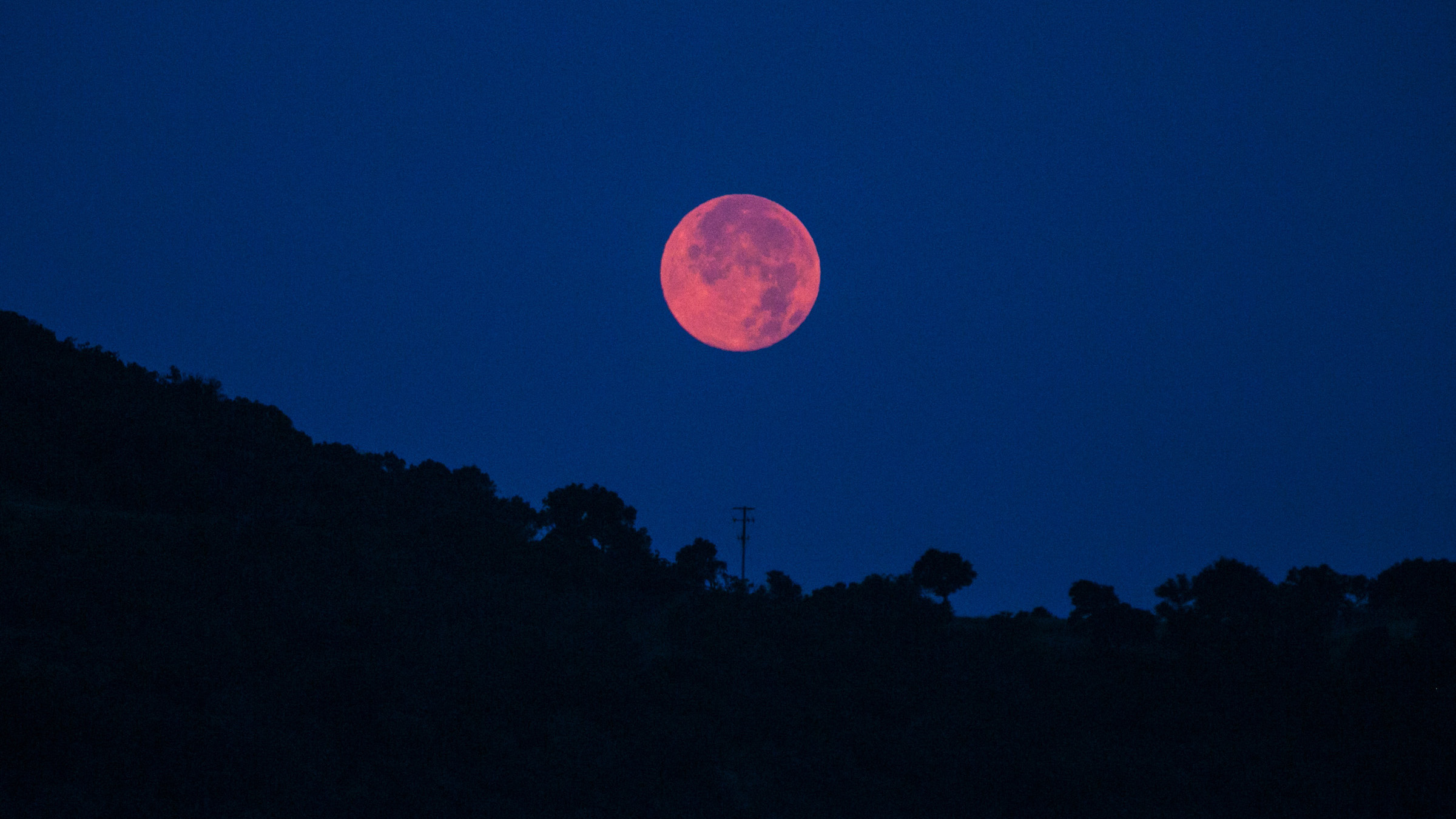Friday's full Buck Moon may be an eerie orange. Here's how to spot it.
Smoke from fires may lead to an intensely-colored moon.

July's full moon will shine brightly Friday night (July 23), although it may appear orange if you're in a region affected by smoky skies from this summer's wildfires.
To catch the Buck Moon at its fullest, look skyward at 10:37 p.m. EDT on Friday (0237 GMT on Saturday, July 24). At that moment, the sun, Earth and moon will be in perfect alignment, but because the moon is about 5 degrees off the plane of Earth's orbit, the sun's light will fall fully on the moon's side facing Earth.
The moon will appear full for about three days around its peak, from Thursday evening (July 22) through Saturday morning, so there's plenty of time to see it, according to NASA.
Related: Blood supermoon lunar eclipse wows skywatchers around the world (photos)
July's full moon may appear an unusual color to many people. About 120 fires burning on the U.S. West Coast, including the Bootleg Fire in Oregon, have sent smoke particles across much of the country's skies, leading to smog and poor air quality, according to Gothamist, a New York City-based publication. This air pollution has caused the sun to appear red-tinted and the moon to look orange.
These brilliant hues are different from the blood-red moon that appears during a lunar eclipse. During a lunar eclipse, Earth blocks the sun's light from reaching the moon. However, the sun is so big and bright that its light can bend around Earth. This light passes through Earth's atmosphere, which filters out the shorter blue wavelengths but lets the longer red and orange wavelengths pass through. Those wavelengths reach the moon, turning it rusty red, Live Science previously reported.
In contrast, the Buck Moon's tint will come from dense smoke particles in Earth's atmosphere. These smoke particles block the shorter wavelengths of yellow, blue and green but let the longer wavelengths of red and orange pass through, according to NASA. Those longer wavelengths give the sky, and hence the moon and the sun, a red-orange color. These colors may appear especially intense during sunrise and sunset, because sunlight has to travel through more of Earth's atmosphere at those times, NASA reported.
Sign up for the Live Science daily newsletter now
Get the world’s most fascinating discoveries delivered straight to your inbox.
July's full moon is called the Buck Moon by the Algonquin Indigenous people of what is now the northeastern United States, according to the now-defunct Maine Farmer's Almanac, which published the names of the full moons in the 1930s, NASA said. The full moon got this name because this is around when male deer, known as bucks, sprout their velvety antlers.
Male deer use their antlers to attract mates, but when wintertime comes, their antlers fall off, according to the U.S. Fish and Wildlife Service (FWS).
Other Algonquin names for July's full moon include the Thunder Moon, due to early summer's frequent thunderstorms, according to the Maine Farmer's Almanac. In Europe, the full moon is called the Hay Moon (for haymaking season) and sometimes the Mead or Honey Moon, in honor of the summer's busy bees.
Hindus, Buddhists and Jains call this full moon the Guru Full Moon (Guru Purnima), which is celebrated as a time for clearing the mind and honoring the guru, or spiritual master, according to NASA.
Originally published on Live Science.

Laura is the archaeology and Life's Little Mysteries editor at Live Science. She also reports on general science, including paleontology. Her work has appeared in The New York Times, Scholastic, Popular Science and Spectrum, a site on autism research. She has won multiple awards from the Society of Professional Journalists and the Washington Newspaper Publishers Association for her reporting at a weekly newspaper near Seattle. Laura holds a bachelor's degree in English literature and psychology from Washington University in St. Louis and a master's degree in science writing from NYU.









